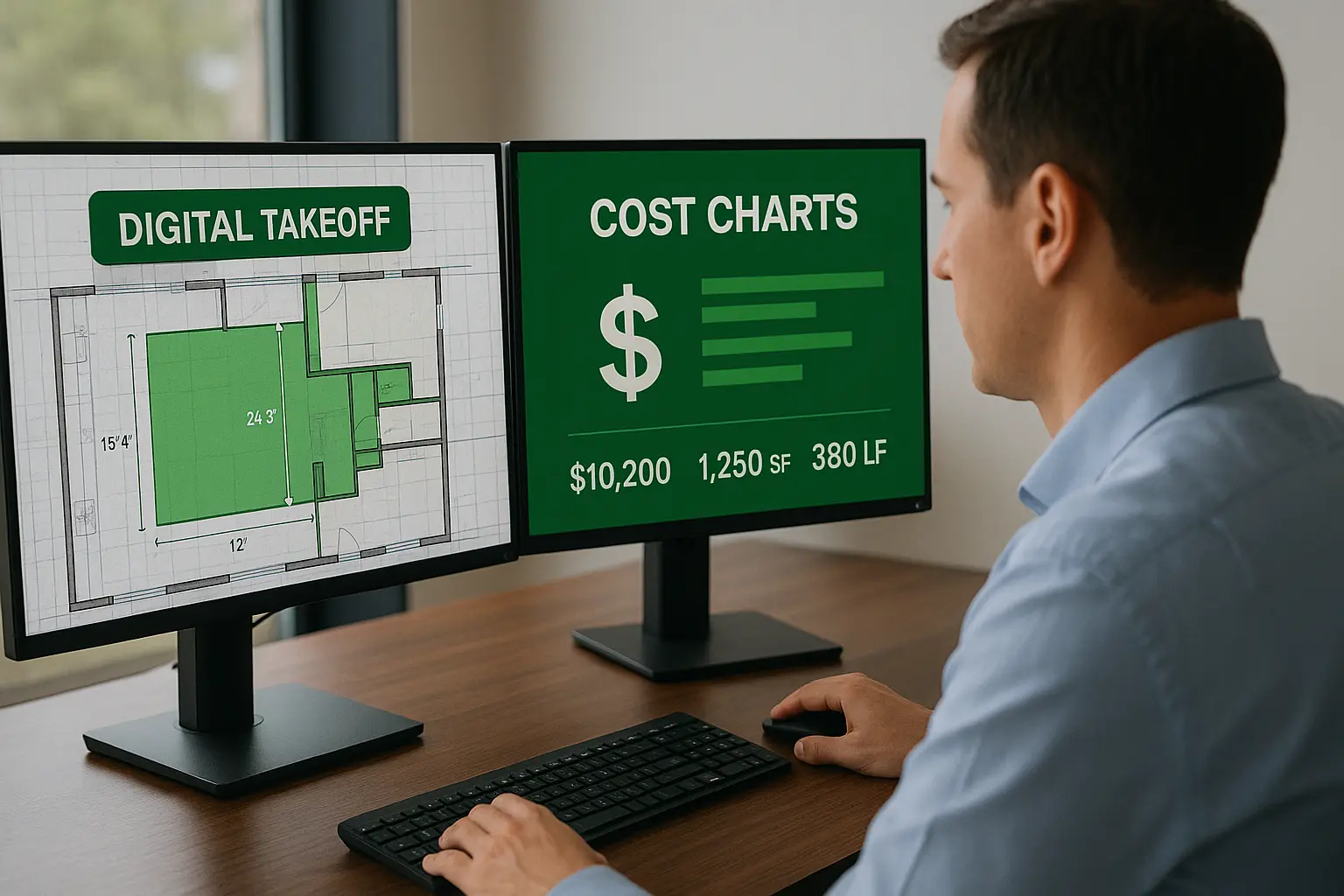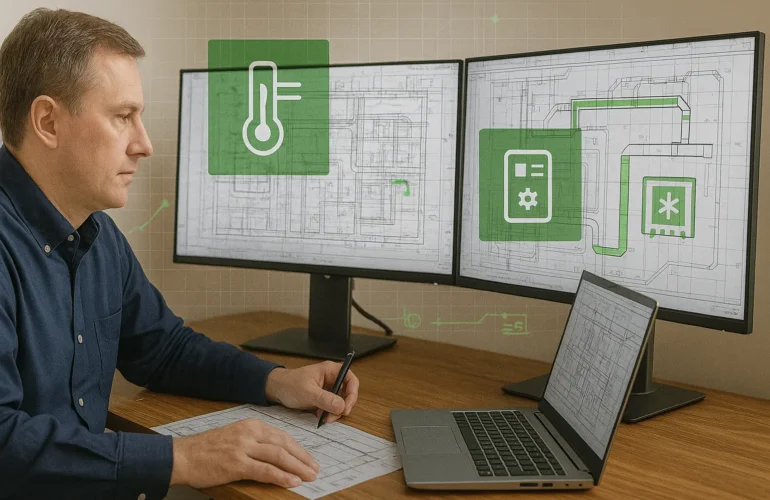Table of Contents
🏗️ Digital Takeoff vs Manual Takeoff — Which Is Better for Your Construction Estimates in 2025?
By Fusion Assist | Accurate Construction Estimates. Fast Turnaround. Real Results.
Introduction
In the construction industry, accuracy and time determine who wins the bid. For decades, estimators relied on manual takeoffs — rulers, highlighters, and scale drawings spread across a desk. Today, digital takeoff technology is reshaping how professionals measure, calculate, and price their projects.
But the question remains: is digital takeoff truly better than manual takeoff?
Let’s break down the differences, benefits, and practical considerations — so you can decide which method gives your business the real competitive edge in 2025.
What Is Manual Takeoff?
Manual takeoff is the traditional process of extracting quantities from printed construction drawings using scales and physical measurement tools.
Estimators mark up paper plans, count materials by hand, and manually enter quantities into spreadsheets.
Typical Process
- Print and review project drawings.
- Measure dimensions using scale rulers.
- Calculate quantities (area, volume, count).
- Enter results into Excel or estimating sheets.
Common Challenges
- Time-intensive (can take hours per trade).
- Prone to human error.
- Difficult to revise when new drawings arrive.
- Hard to share, collaborate, or standardize across teams.
While manual takeoff has trained generations of estimators, it’s increasingly inefficient in today’s digital-first construction environment.
What Is Digital Takeoff?
Digital takeoff uses specialized software to measure drawings directly from digital plans (PDFs, DWGs, etc.) without printing. The software automatically calculates areas, lengths, and counts — reducing manual labor and improving accuracy.
How It Works
- Import drawings into digital takeoff software.
- Set the scale digitally.
- Trace or auto-detect quantities (walls, flooring, rebar, etc.).
- Export quantities directly into cost estimation templates.
Popular Software Examples
- PlanSwift
- Bluebeam Revu
- On-Screen Takeoff (OST)
- Kubla Cubed
- Trimble and Stack
Digital takeoffs empower estimators to complete more bids in less time while maintaining data consistency.
Digital Takeoff vs Manual Takeoff — A Side-by-Side Comparison
| Criteria | Manual Takeoff | Digital Takeoff |
|---|---|---|
| Speed | Slow — every line and count done by hand | Fast — auto-measurements and copy-paste reuse |
| Accuracy | Error-prone, especially with complex drawings | Highly accurate with built-in scaling tools |
| Revision Handling | Requires rework for every drawing update | Quick revisions with version tracking |
| Collaboration | Difficult — physical copies and manual sharing | Easy — cloud-based, real-time collaboration |
| Cost Efficiency | Lower software cost but higher labor hours | Subscription cost but higher ROI |
| Data Integration | Standalone, manual entry to Excel | Seamless export to estimating systems |
In 2025, where turnaround time directly impacts win rates, the digital advantage is undeniable.
The Key Benefits of Digital Takeoff
1. Faster Turnaround
Digital takeoffs can reduce bid preparation time by up to 60–70%, enabling estimators to handle more projects each month.
2. Improved Accuracy
Software ensures precision scaling, eliminates manual miscalculations, and maintains consistent measurement units — vital for margin protection.
3. Easier Collaboration
Multiple team members can work simultaneously on the same project from different locations, improving workflow efficiency.
4. Version Control
When architects issue revised drawings, digital tools make it simple to update only the affected areas — no full redo required.
5. Better Reporting & Insights
Instant exports to cost databases and project management systems enable fast decision-making and data analysis.
When Manual Takeoff Still Works
Despite its drawbacks, manual takeoff isn’t entirely obsolete.
Some small-scale or low-budget projects — especially for local contractors with limited digital access — can still benefit from manual workflows.
It also remains useful for training new estimators in understanding drawing fundamentals and spatial relationships.
But for businesses that want scalability, transparency, and consistent profitability — manual takeoff can’t keep up.
Why More U.S. Contractors Are Switching to Digital Takeoff Services
In 2025, the U.S. construction market faces tight deadlines, price volatility, and labor shortages.
Contractors who outsource to professional digital takeoff services gain a serious edge:
- They bid faster.
- They reduce in-house costs.
- They receive accurate, formatted data ready for pricing and submission.
That’s why Fusion Assist continues to serve leading contractors, developers, and estimators across the U.S. — providing accurate construction takeoffs with 24–48-hour turnaround and full digital traceability.
Internal References for Further Reading
Conclusion
The debate between manual vs. digital takeoff isn’t about tradition — it’s about transformation.
Manual methods built the foundation of estimating.
Digital takeoffs are building its future.
If your goal is speed, consistency, and profitability, it’s time to modernize.
And if you’d rather not invest in software or training — Fusion Assist can do it for you.
Get fast, accurate takeoffs within 24–48 hours.




